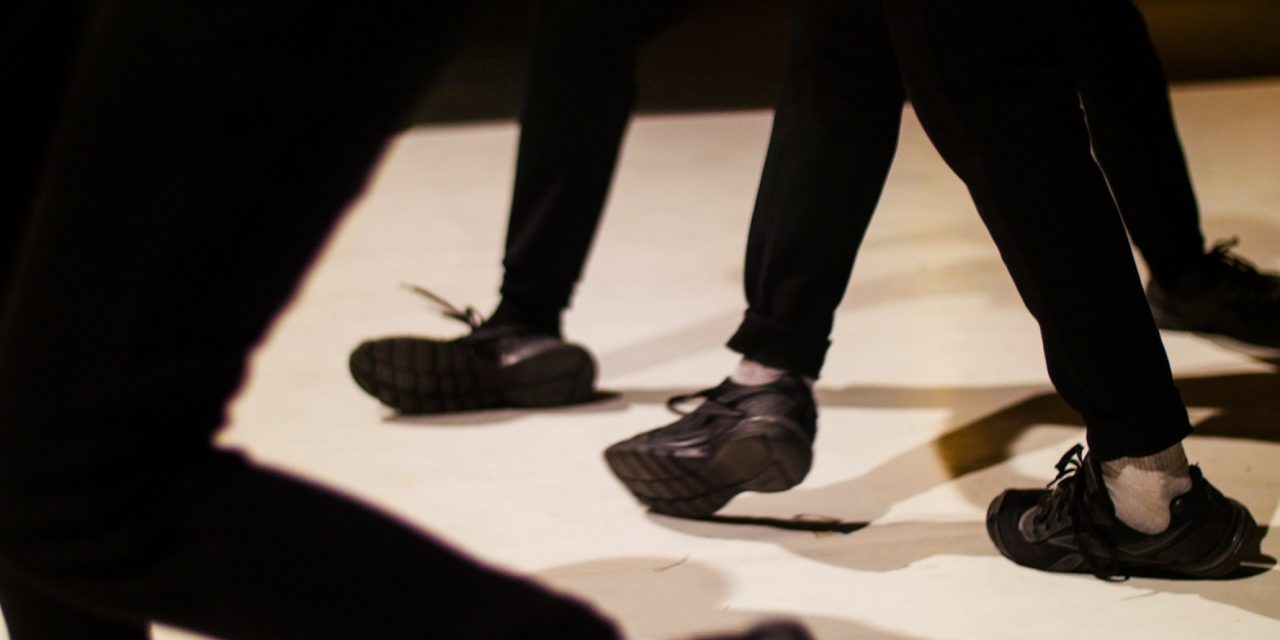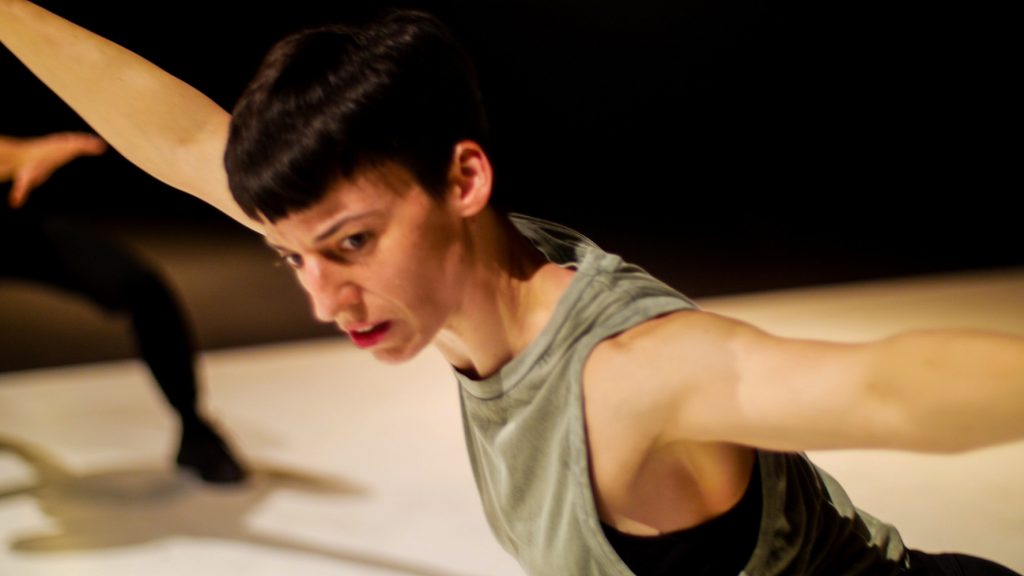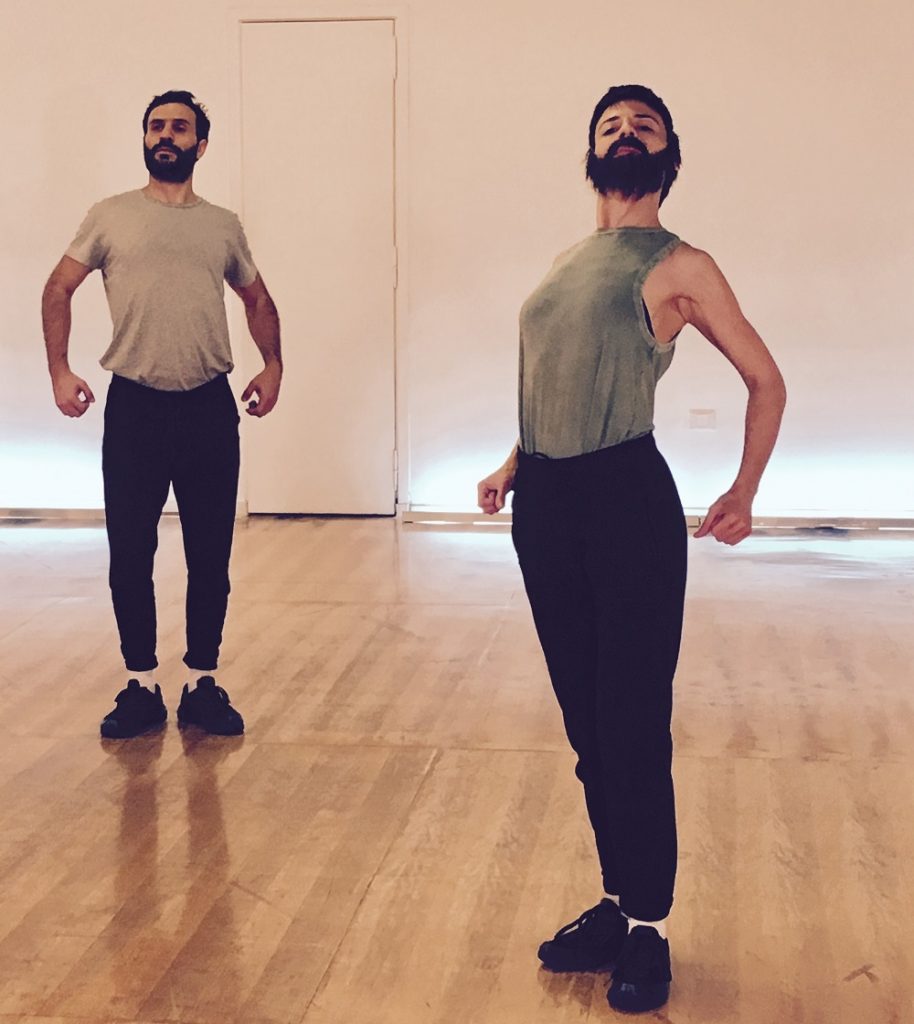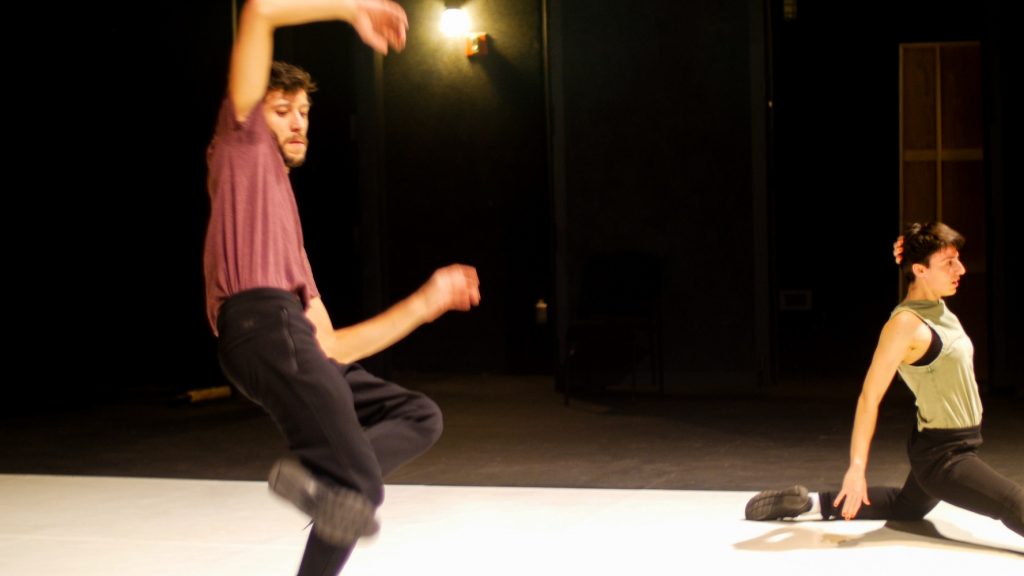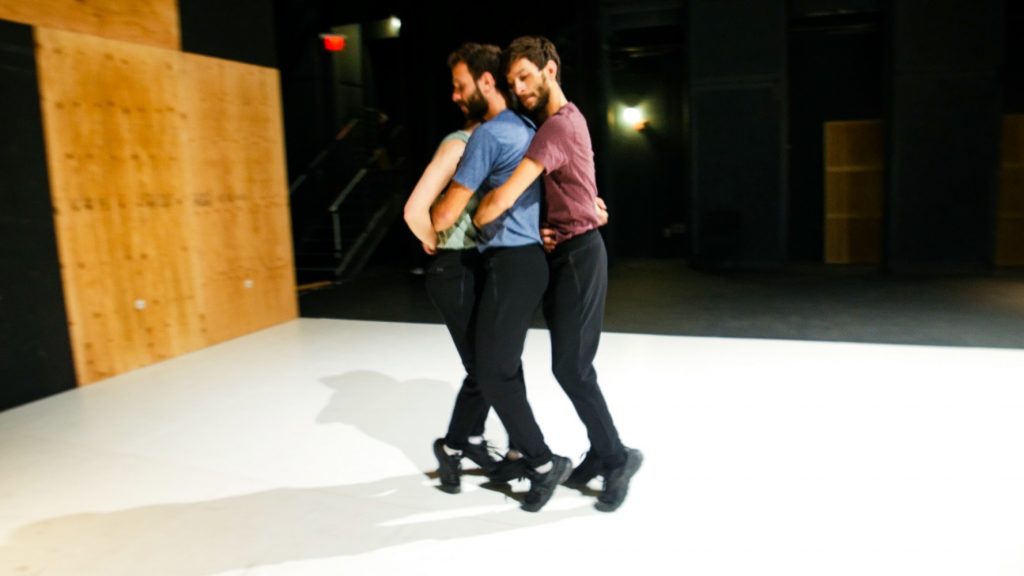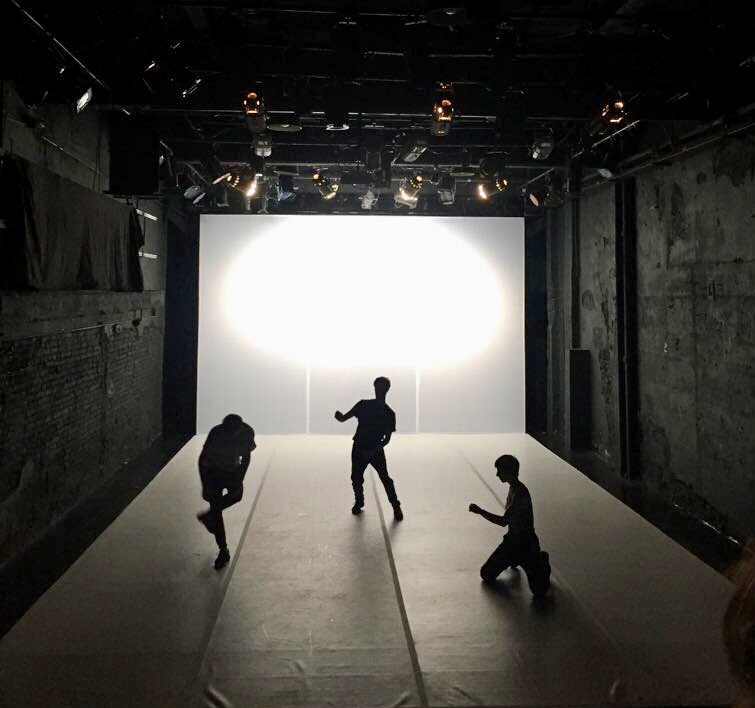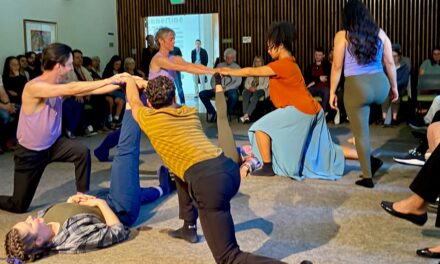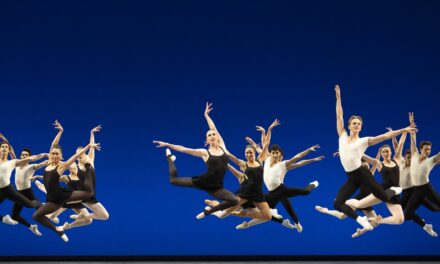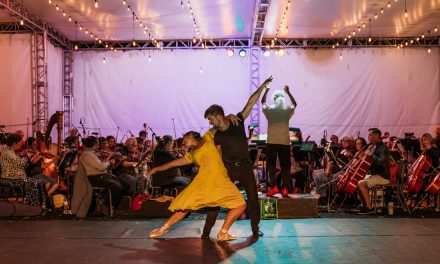Archival footage of a person in a T-shirt and jeans dancing to rhythmic, instrumental music quiets the audience at REDCAT, CalArt’s Downtown Center for Contemporary Arts. The dancer in the video moves about a dirt surface lined with trees; passersby cheer him on, one watchful old woman eventually even joins him. The recording glows in the dark theater. Seemingly jumping off the back wall it’s projected on and tumbling into the stage itself, the footage fills the room with a premonition of what is to come.
It is with this formal decision that Buenos Aires-based choreographer Diana Szeinblum begins her newest dance piece ADENTRO!. In her notes, Szeinblum describes the work’s multi-step research process as a “survey of kinetic folk material such as tutorials, manuals, tapes, and even a visit to a specialized dancer.” With this in mind, the opening video is then not just foreshadowing. It is, too, a visual citation of the traditions that ADENTRO! is grounded in; an educational moment outlining histories of Argentine movement and highlighting specific steps which Szeinblum will repeat, re-contextualize, and reconstruct throughout the rest of her piece.
As the video ends, three dancers walk onto the stage. Pablo Castronovo, Bárbara Hang, and Andrés Molina begin to move slowly, tensely as static music plays. Rooster cuckoos break the crackling noise as the dancers puff out their chests and lift up their chins. A psycho-sexual motif emerges, machismo becomes the butt of the joke. The dancers gloat and gaze and guffaw. They take turns interjecting themselves as the center of attention and then quickly become burdened with inklings of self-doubt. They pucker their lips, invoking the universally terrifying kissy faces of cat-callers. They bellow “heeeey” and then “heyooooo” and then “haaoooo.” Hang attempts to ameliorate her feminine inferiority by putting on a costume beard and tries to dismiss her inability-to-snap by thumping her chest instead. Flexing their arms and comparing their bodies, the dancers’ hyperbolized movements reference the exaggerated masculinity of Zamba, an appropriation of misogyny that provides the framework for new movement.
In her notes, Szeinblum asks “Is studying physically the body’s movement in traditional dance a way of getting closer to the people?”. Her choreography responds with a resounding yes. The dancers scream and mumble, snap and stomp. They run in circles and fall on the floor and roll around on the outer edges of their pigeon-toed feet. A counting sequence—uno, dos, tres, cuatro!—morphs into a more familiar dance-based section in which movement is quick and soft, the dancers’ hands jabbing and swirling in equal measure. Castronovo, Hang, and Molina hold each other close, their bodies pressed up against one another; they step ball change away from their intricate formation and Hang pulls off her beard, placing it in her pocket.
Visually, sensorially, and aurally, ADENTRO! calls on embodied knowledge to interrogate a broader political project of celebrating Argentine histories. Rooting itself in cultural signifiers (and the influence of movement in shaping what is subsequently signified), the piece was poetic in its re-presenting tradition and nuanced in its humorous disassembling of manhood. The piece deconstructs both the bodily language of traditional dance as well as the ferocity of its accompanying music and, with everyday movements informing the piece’s choreographic structure, ADENTRO!’s stylistic motifs are clearly shaped by legacies of performance and modern dance—a blending of movement and sound reminiscent of Pina Bausch, who Szeinblum studied under and worked with in Germany.
In ADENTRO!’s final minutes, the lights go down, and the dancers continue to move in darkness, their silhouettes outlined against the back wall that, 40 minutes before, projected footage of one of the work’s inspirations. The dancers’ movements are abrupt and fluid all at once, a paradox that seems to reflect ADENTRO!’s founding in simultaneous bravado and diffidence. The dancers are wild, erratic, and uninhibited; their movements, as Szeinblum might say, are the histories of the people, their bodies the peoples’ dance.
ADENTRO! was commissioned by “Tres Danzas Argentinas,” premiered at Teatro de La Rivera, Complejo Teatral de Buenos Aires in November 2016, and was awarded with Teatro del Mundo Award 2017, Buenos Aires University.
Feature photo: Diana Szeinblum’s ADENTRO! – photo by Vanessa Crocini.

